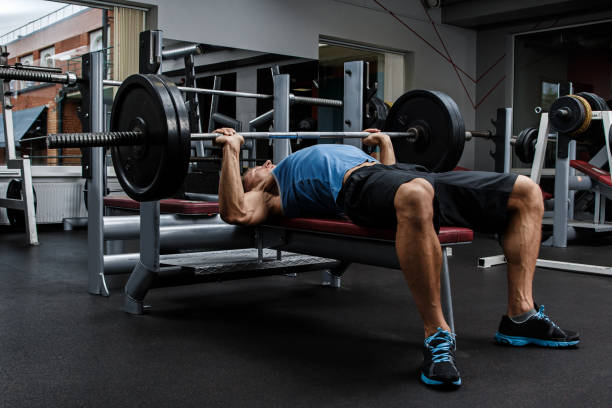
Introduction: Powerlifting at Home
Imagine the thrill of stepping into your own powerlifting sanctuary right in the comfort of your home. No more waiting for equipment at a crowded gym or worrying about time constraints. Powerlifting at home offers the ultimate convenience and flexibility to tailor your workouts according to your schedule and preferences.
Affordable powerlifting accessories are essential in setting up a budget-friendly yet effective home gym. From wrist wraps to lifting belts, these tools not only enhance your performance but also provide crucial support during heavy lifts.
Investing in quality accessories can make a significant difference in your training experience without breaking the bank. Creating a budget powerlifting gym requires careful planning and resourcefulness.
From sourcing inexpensive weights to building DIY weight storage solutions, every choice you make contributes to maximizing both space and functionality while minimizing costs. When considering home powerlifting equipment, opt for cost-effective options such as second-hand barbells or weight plates to stay within budget without compromising on quality.
Essential Powerlifting Equipment on a Budget
When setting up your powerlifting garage gym on a budget, it’s essential to prioritize the key equipment that will allow you to perform the main lifts effectively. One of the most crucial pieces of equipment is a reliable and sturdy barbell. Look for a cheap powerlifting barbell that can handle heavy weights without breaking the bank.
There are plenty of affordable options available that offer good quality for the price, so do some research and find one that fits your budget. In addition to a quality barbell, you’ll need a set of weight plates to load onto the bar for your lifts.
Opt for affordable weight plates that provide enough variety in terms of weight increments so you can gradually progress in your training. You don’t need to splurge on expensive bumper plates – standard iron plates work just fine and are much more cost-effective for building up your home powerlifting equipment collection.
To complement your barbell and weight plates, consider investing in some affordable powerlifting accessories like lifting straps, chalk, and knee sleeves. These accessories can enhance your performance and help prevent injuries during heavy lifting sessions.
You don’t have to spend a fortune on these items; there are plenty of budget-friendly options available that offer good value for their cost. By focusing on these essential powerlifting equipment pieces while keeping an eye on economical garage gym ideas, you can build a solid foundation for your budget powerlifting gym without breaking the bank.
DIY Powerlifting Platform Guide
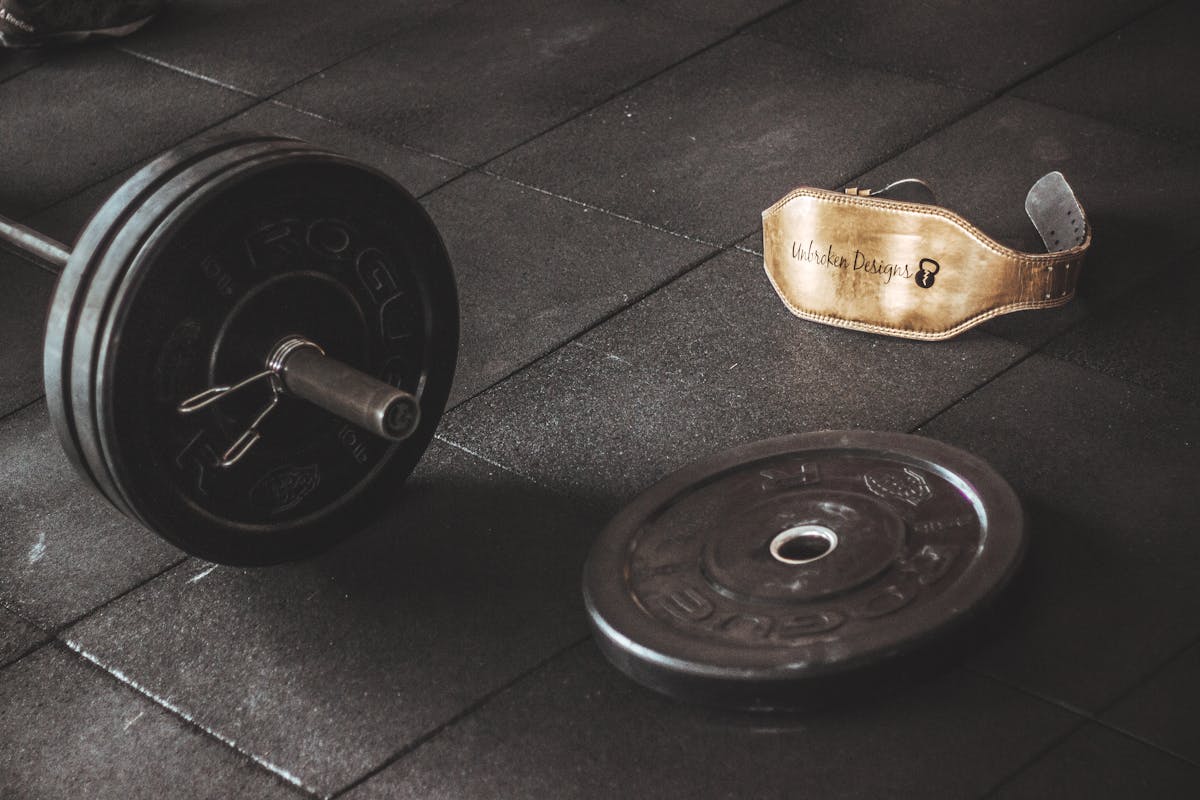
When it comes to setting up your powerlifting garage gym on a budget, one of the essential elements you’ll need is a sturdy and reliable DIY powerlifting platform. This platform not only provides a level surface for your exercises but also helps protect your floors from damage caused by heavy weights.
Building your own powerlifting platform can be a cost-effective solution compared to buying a pre-made one. To create your DIY powerlifting platform, you’ll need the following materials: plywood sheets, stall mats or rubber gym flooring, wood screws, and adhesive.
Start by cutting the plywood to the desired size – typically 4 ft x 8 ft is suitable for most lifting purposes. Then, secure the plywood sheets together using wood screws to form the base of your platform.
Next, cut the stall mats or rubber flooring to fit on top of the plywood base and attach them securely with adhesive. Having a well-built DIY powerlifting platform not only enhances your lifting experience but also ensures safety during heavy lifts.
It provides a stable surface for movements like deadlifts, squats, and bench presses, reducing the risk of injury due to uneven flooring or slipping weights. By investing time and effort in constructing your own platform, you can enjoy an economical garage gym setup without compromising on quality or safety.
Safety Considerations and Tips
When setting up your budget powerlifting gym in your garage, safety should be a top priority. Here are some key considerations and tips to ensure you can train effectively while minimizing the risk of injury. First and foremost, make sure your DIY powerlifting platform is stable and level.
A solid foundation is crucial for heavy lifting, so double-check that all components are securely fastened together. This will not only protect your floor from damage but also provide a safe surface for performing lifts like squats and deadlifts.
Additionally, invest in quality affordable powerlifting equipment such as a sturdy yet cheap powerlifting barbell and affordable weight plates. Avoid using old or damaged equipment that could potentially fail during a lift, putting you at risk of injury.
It’s worth spending a bit more on essential items to ensure they can withstand the demands of heavy lifting over time. Don’t overlook the importance of proper form and technique when performing budget powerlifting workouts at home.
Consider filming yourself or seeking feedback from experienced lifters to ensure you’re using correct mechanics during lifts. Remember, it’s better to start with lighter weights and focus on perfecting your form before progressing to heavier loads in your cost-effective garage gym setup.
Sample Powerlifting Workout Program
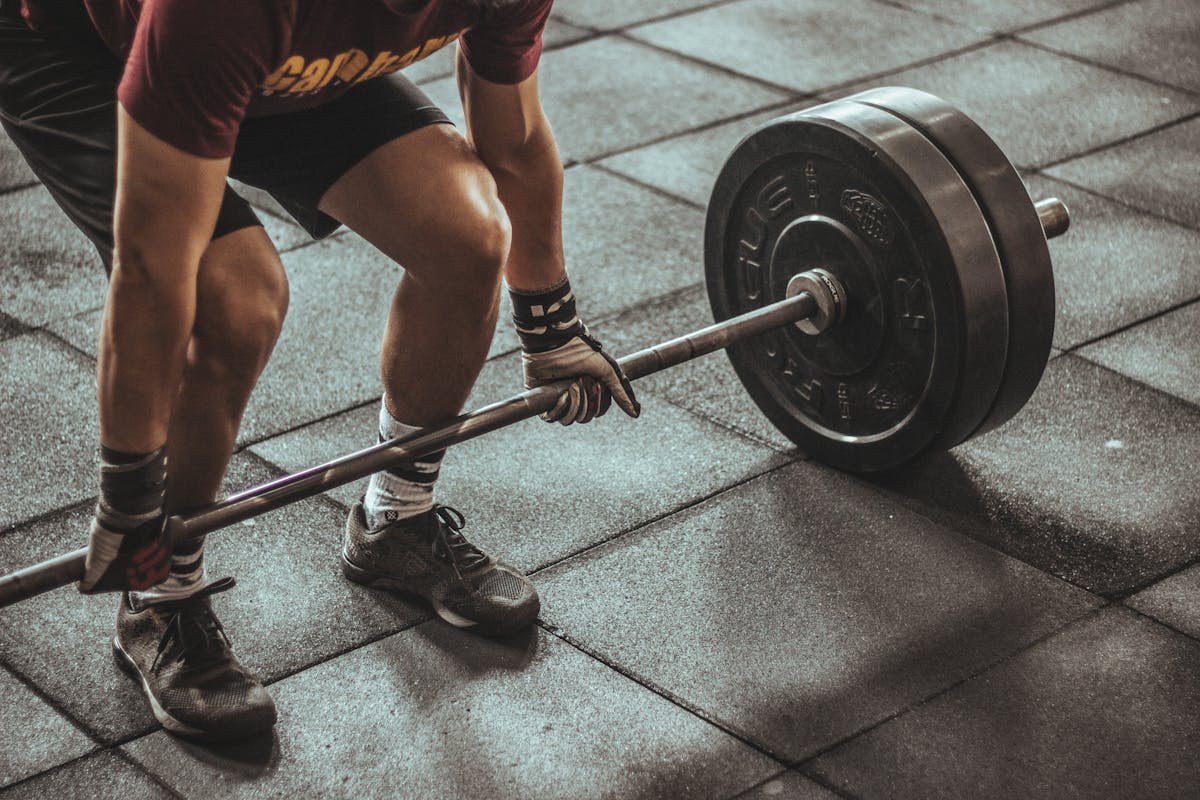
When it comes to setting up a powerlifting garage gym on a budget, having a solid workout program in place is key to maximizing your progress and gains. A well-structured powerlifting workout program will not only help you build strength but also keep you motivated and consistent in your training. Here, we’ll outline a sample powerlifting workout program that is both effective and budget-friendly.
For beginners starting their powerlifting journey, focusing on the three main lifts – squat, bench press, and deadlift – is essential. Starting with compound movements will lay a strong foundation for strength development.
Begin each session with these main lifts, performing them with proper form and gradually increasing the weight as you progress. Incorporating accessory exercises such as rows, pull-ups, and lunges can help strengthen supporting muscles and prevent imbalances.
As you advance in your powerlifting journey, incorporating variation into your training can be beneficial for continued progress. This could include implementing different set and rep schemes, trying out new accessory exercises to target weak points, or even rotating different variations of the main lifts such as front squats or deficit deadlifts.
Remember to always prioritize proper form over heavy weights to prevent injuries and ensure long-term progress in your powerlifting endeavors. Consistency is key when it comes to any workout program, especially in powerlifting where strength gains come gradually over time.
With dedication and adherence to a structured training plan that includes progressive overload principles, you’ll see improvements in strength and performance while staying within your budget constraints. By following these guidelines and tailoring them to your individual needs and goals, you can create an effective powerlifting workout program that suits your budget-friendly garage gym setup seamlessly.
Real-Life Examples of Budget Powerlifting Gyms
Real-Life Examples of Budget Powerlifting Gyms Let’s dive into some real-life examples of how you can set up a budget powerlifting gym right in your garage. Many lifters have gotten creative and resourceful when it comes to building their own workout spaces without breaking the bank.
One common theme among these setups is focusing on essential equipment that delivers the most value for your money. Affordable weight plates, a sturdy barbell, and a reliable power rack are often at the core of these budget-friendly gyms.
Another key aspect of creating a budget powerlifting gym is DIY solutions. For example, some lifters have built their own powerlifting platforms using plywood and rubber mats – a cost-effective gym setup that provides ample protection for both your floors and equipment.
Additionally, DIY weight storage solutions can help you keep your space organized without spending a fortune. By repurposing old shelves or constructing simple weight racks, you can optimize your garage gym layout while saving money.
When it comes to outfitting your budget powerlifting gym with accessories, think strategically about where to allocate your funds. Investing in affordable powerlifting accessories like lifting straps, wrist wraps, and knee sleeves can enhance your workouts without breaking the bank.
Similarly, incorporating cost-effective recovery tools such as foam rollers, lacrosse balls, and resistance bands can support your training regimen while staying within budget constraints. By prioritizing essential equipment and getting creative with DIY solutions, you can create an economical garage gym that meets your powerlifting needs without draining your wallet.
Choosing Affordable Powerlifting Equipment
When it comes to setting up your own powerlifting gym at home on a budget, choosing affordable powerlifting equipment is crucial. You don’t need to break the bank to get started on your fitness journey. Let’s dive into some key considerations for selecting cost-effective gear.
Firstly, focus on the essentials. Invest in a sturdy and reliable powerlifting barbell that can handle heavy loads without compromising safety.
Look for a cheap powerlifting barbell that doesn’t sacrifice quality – it should have a good grip, appropriate knurling, and be durable enough to withstand your toughest lifts. Next, consider affordable weight plates.
Opt for cast iron plates as they are often more budget-friendly compared to bumper plates. Keep an eye out for second-hand options or sales at local sporting goods stores to score some great deals.
Additionally, DIY weight storage solutions can help you keep your space organized without spending a fortune – repurposing old crates or building simple racks can save you money while maintaining functionality. Don’t overlook the importance of investing in accessories like lifting straps, chalk, and knee sleeves.
These items can enhance your performance and protect your body during intense workouts without costing you an arm and a leg. Remember, with smart shopping and strategic choices, creating an affordable powerlifting setup is completely achievable.
Space Optimization for Small Garages
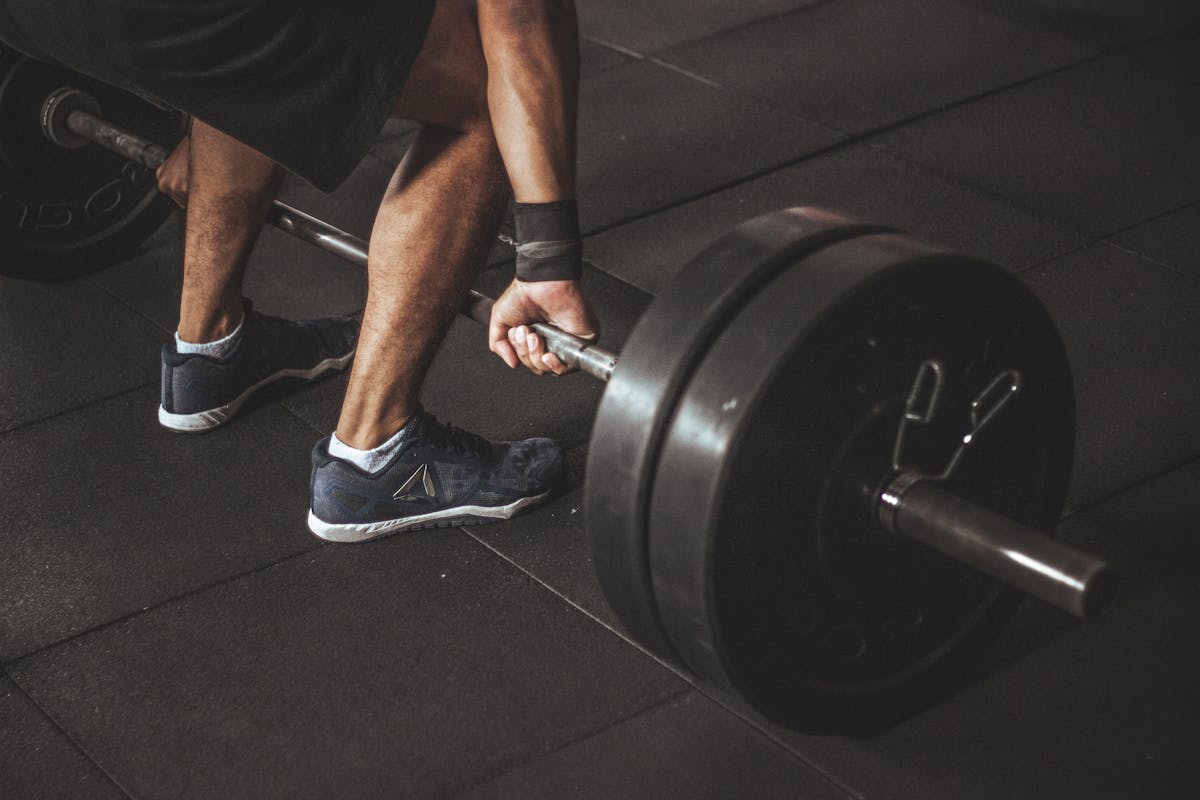
When setting up a powerlifting gym in a small garage, space optimization is crucial. You want to make the most of every square inch while still ensuring you have enough room to move freely during your lifts. To start, consider mounting your power rack or squat stand on the wall to free up floor space.
This not only creates more room for other equipment like benches and platforms but also adds a level of safety by securing your heavy lifting setup. Another space-saving strategy is to invest in collapsible or foldable equipment.
Look for items like folding weight benches, compact dumbbells, and portable platforms that can be easily stored against the wall or slid under larger equipment when not in use. This way, you can enjoy a fully functional powerlifting gym without sacrificing valuable floor space in your garage.
Additionally, think vertically when organizing your powerlifting gym accessories and recovery tools. Install shelves or racks on the walls to store items such as resistance bands, foam rollers, and mobility tools neatly off the ground.
Utilize clear containers or bins to group smaller accessories together and keep them organized. By optimizing your vertical storage options, you’ll keep your garage gym clutter-free and create a more efficient workout environment that maximizes both space and functionality.
DIY Weight Storage Solutions
When setting up your powerlifting garage gym on a budget, DIY weight storage solutions can be a game-changer. Not only will proper weight storage keep your space organized and safe, but it can also help extend the lifespan of your equipment. One cost-effective option is to build your own weight rack using basic materials like wood or metal piping.
Look for online tutorials or leverage your creativity to design a custom solution that fits your space and equipment needs. An economical garage gym idea for DIY weight storage is repurposing existing items like sturdy shelves or bookcases.
These can be easily adapted to hold weight plates, dumbbells, and kettlebells. By making use of what you already have or exploring secondhand options, you can save money while keeping your gym tidy and functional.
Additionally, consider utilizing wall-mounted hooks or pegboards to store smaller accessories such as resistance bands or lifting belts in a space-saving manner. Affordable weight plates are essential components of any budget powerlifting setup, so ensuring they are stored safely is crucial for both organization and injury prevention.
When constructing DIY weight storage solutions, prioritize stability and weight capacity to accommodate all your plates securely. By taking the time to plan and create a customized storage system that suits your specific needs, you can maximize the efficiency of your home powerlifting equipment while staying within budget constraints.
Budget-Friendly Recovery and Accessory Equipment
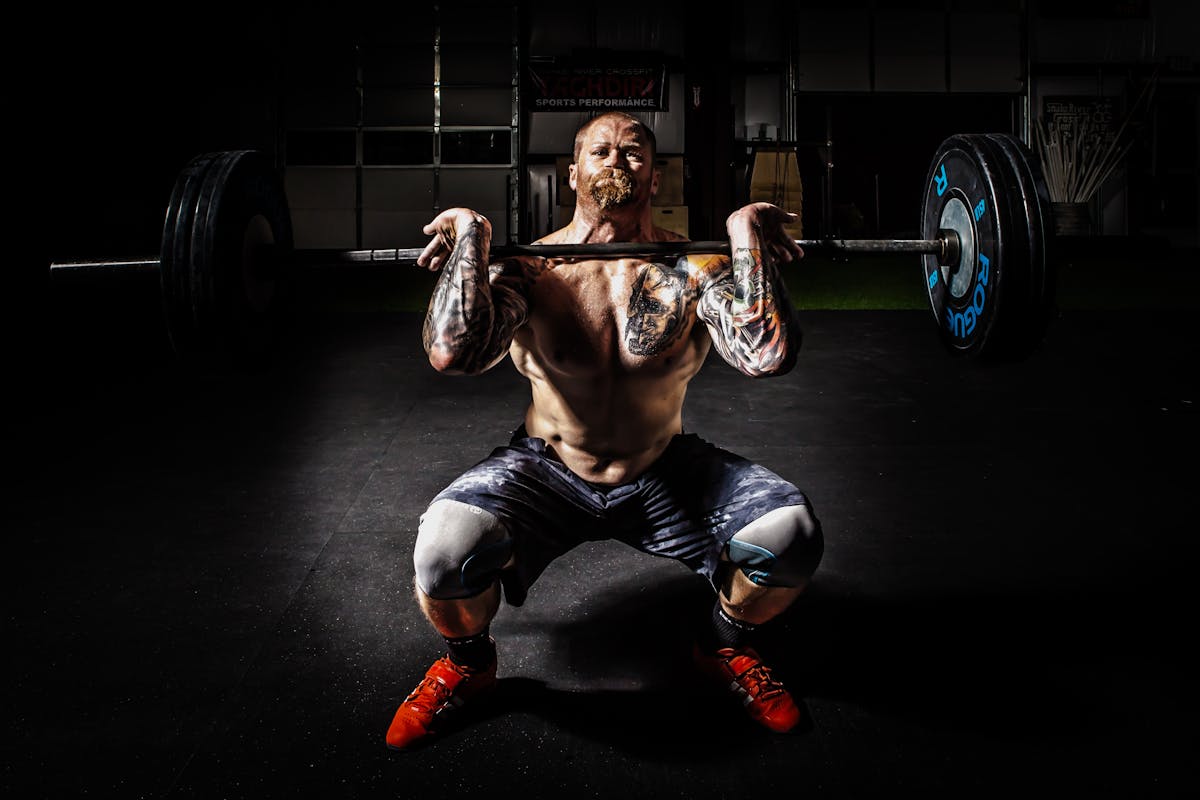
When it comes to recovering from intense powerlifting workouts, you don’t need fancy equipment or expensive tools. There are plenty of budget-friendly recovery options that can help you bounce back quickly and get ready for your next lifting session.
Foam rollers are a staple in any home gym and can be found at affordable prices online or in stores. Rolling out your muscles after a tough workout can help alleviate soreness and improve flexibility, making it easier for you to hit those heavy lifts the next time around.
Another cost-effective recovery tool is a lacrosse ball, which can be used for targeted trigger point release. By rolling the lacrosse ball over tight areas in your muscles, you can work out knots and tension that may have built up during your training sessions. If you guys are interested in learning more information about the best beginner equipment you can find all of that here.
This inexpensive tool is small enough to carry in your gym bag or keep in your home gym for quick and easy use whenever needed. In addition to recovery tools, don’t forget about the importance of accessory equipment to support your powerlifting goals.
Accessories such as lifting straps, wrist wraps, and knee sleeves can provide extra support when lifting heavy weights, helping you maintain proper form and reduce the risk of injury. These items can often be found at affordable prices online or through discount retailers, making them essential additions to your budget-friendly powerlifting setup.
Conclusion
As we wrap up our journey through the world of budget-friendly powerlifting garage gyms, it’s time to reflect on the incredible possibilities that await those who are willing to put in the effort and creativity. Building a powerful workout space without breaking the bank is not only achievable but also immensely rewarding.
By utilizing cost-effective gym setup strategies and incorporating affordable weight plates and equipment, you’ve taken a giant leap towards creating your very own budget powerlifting sanctuary. Remember, safety should always be a top priority when engaging in powerlifting on a budget.
Implementing powerlifting safety tips such as proper form, gradual progression, and regular equipment maintenance will ensure that your home gym remains a safe haven for strength building. With DIY weight storage solutions and space-saving powerlifting setups, you’ve maximized your garage space for optimal performance without compromising on functionality.
Embrace the spirit of innovation and resourcefulness as you continue to fine-tune your economical garage gym setup. Whether it’s adding budget home gym recovery tools or exploring affordable powerlifting accessories, there are endless opportunities to enhance your training experience without draining your wallet.
With dedication and perseverance, you have successfully crafted a budget powerlifting haven that not only supports your fitness goals but also inspires others to embark on their own journey towards strength and resilience. Cheers to empowering yourself through the transformative art of powerlifting on a budget!